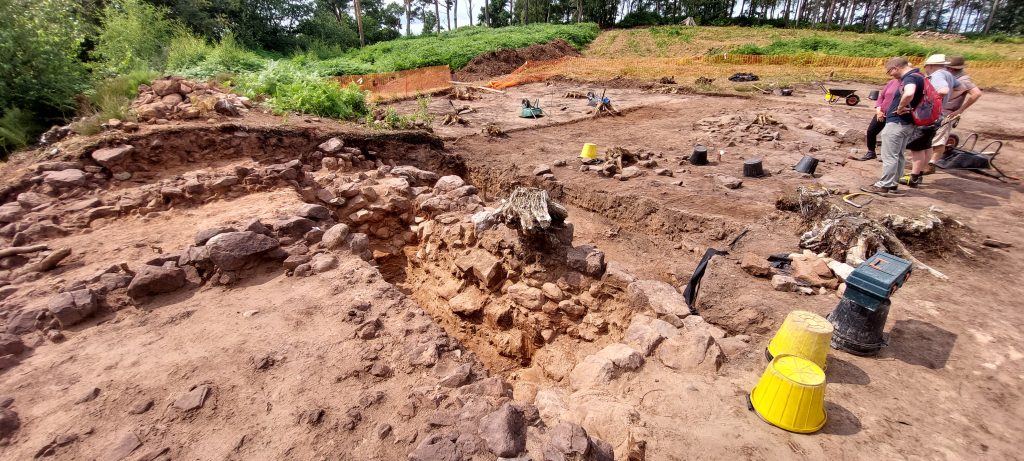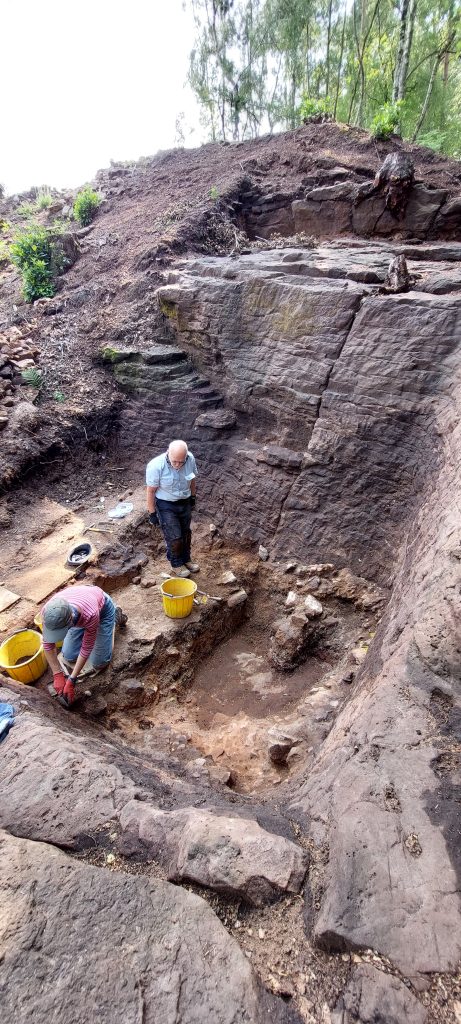Nesscliffe Hillfort gives archaeologists more finds of national importance
Archaeologists who returned to Nesscliffe Hill this summer to continue their explorations say the site has yielded more finds of national importance.
Paul Reilly, a visiting fellow in archaeology at the University of Southampton, and Gary Lock, emeritus professor of archaeology at the University of Oxford, and their team have discovered evidence of iron workings, interior walls giving insight into the architecture of the hillfort and evidence of guard chambers.

Nesscliffe Hillfort dig
Gary said:-
“We’ve got fantastic evidence in the big ditch for several furnaces – including the ceramic walls of furnaces; lots of charcoal which we can radiocarbon date, lots of slag which is the waste product of furnaces and bits of iron.
“We’ve also found tuyères – the ceramic end of bellows. Iron Age furnaces were pretty crude and could only be used once, as they would have to break them open to get the iron out.
“We think they were down in the ditch as it was a sheltered spot and were probably making little handy tools.”
Carbon dating will tell the team if the workings date from the early or middle Iron Age and what kind of implements were being constructed.
A trench through the middle of the site also exposed interior walls which formed part of the ramparts of the hillfort and how it was constructed.

Nesscliffe Hillfort dig
Gary added:-
“That’s very, very unusual evidence. It’s quite rare to get anything in the interior of ramparts.”
Previous digs uncovered magnificent guard chambers near the fort entrance, which Gary described as “some of the best preserved in Britain”.
He concluded:-
“In summary, we’ve got three things which are of national importance. Evidence for iron working, the guard chambers – some of the best preserved in Britain, and internal evidence in the rampart.”
Robert Macey, Shropshire Council’s Cabinet member for culture and digital, said:-
“These outstanding discoveries mean the experts will be able to throw even more light onto our local history and the occupation of the settlement.
“It is rewarding to hear our site is yielding so much information and well-preserved evidence of the lives lived on site, and I look forward to exploring funding opportunities to develop our interpretation and share the knowledge with visitors.”
If funding is secured the team will return for the final time next summer to explore another possible roundhouse site and dig deeper down to Iron Age levels.
To find out more about the site and a video tour of excavations visit: http://www.shropshiresgreatoutdoors.co.uk/site/nesscliffe-hills-and-the-cliffe-countryside-heritage-site/
Shropshire Council is also exploring ideas for improving interpretation at the site, including the option for information boards and reconstruction drawings, a new webpage for the site, or augmented reality – which would use GPS to guide people around the site.

